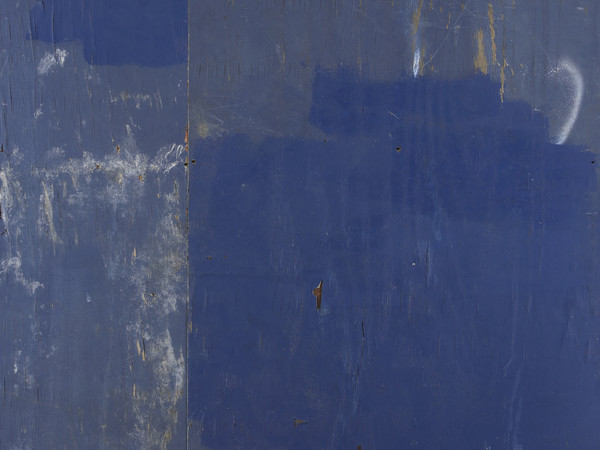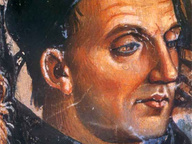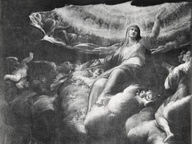Bunkering in Paradise. The Rest of Us Just Live it

Sebastian Lloyd Rees, 2014 (particolare). Courtesy of the artist
From 06 Novembre 2014 to 12 Novembre 2014
Turin
Place: Toolbox Coworking
Address: via Egeo 16
Times: everyday 11am - 7pm
Responsibles: Eugenio Re Rebaudengo
Telefono per informazioni: +44 (0)20 72651480
E-Mail info: info@artuner.com
Official site: http://www.artuner.com
To the bunker means supply. The term describes the process of replenishment of ships at the port, a meeting with the land on which depends their fate at sea. What, then, means "stock up to heaven"? The phrase suggests the choice of what to take away from paradise, in any form or place you intend. But it also suggests the idea of ??starting connected to a dystopia after all why leave paradise?
In different ways, Max Ruf, Sebastian Lloyd Rees and Adriano Costa dealing with all of the features of certain sites. The works in the exhibition interpret these places, whether they are bliss or hell, as the specific sites coordinated constellations of objects, processes and stories that, in their configurations are loaded with meanings social, economic and historical. Digging the constituent parts of a given place, the artists they extract, recover, reveal and re-represent the residues, drawing on the fragments and memories, to engage and at the same time expand the relationship between the viewer and the space.
The paintings and recordings of Max Ruf reflected laterally traditional genre painting sur le motif. Once out on the outside, the work becomes the subject of a stage and enthusiasm directed to gather, learn, and leave behind. In his work, the cracks between space and memory are filled with something random and unpredictable; Ruf adopting this tactic to tie his paintings at the site, although they maintain a range of possibilities opened up and reject suggestions that expropriation of interpretation.
The denial of authorial intent is exemplified by the action of the artist's paintings in the press against each other when the color is still fresh. This technique butterfly (often performed in the back of the van Ruf during his travels in the country) describes the transition conditions and job creation. The image is constructed through the passage from the production phase to phase consummation - it speaks of departure and arrival, proximity and distance, in a single breath.
Sebastian Lloyd Rees explores the forgotten urban spaces from which collects objects which then returns as works of art. Lloyd Rees is always looking for the hidden resources behind common objects from which to spill stories through minimal intervention. What Lloyd Rees recovers from the streets is in fact already detector; the appropriation of all that has been unused and wasted - a sign of Budweiser, a door, a billboard - pushes the narrative latent to be questioned constantly. As works of art, these objects were the focus of a reflection on the social, political and cultural related to their production, consumption and obsolescence.
Much of the work done by Lloyd Rees to date can be read as a prose fictional but accurate. However, there are times, particularly in the work with the doors (Untitled, 2014), in which the artist is moving towards the same lyrical verses of which Adriano Costa is so experienced. The work of French has always been open to a poem that emphasizes the narrative object. His compositions are often filled with a quiet, sometimes absurd pathos. This ability gets a considerable degree of continuity between the sculptural works, and two-dimensional, and performance that Costa has in this exhibition. POPCORNPINGPONGPAINTINGS shows that Costa is a playwright, which is why tragedy and comedy coexist in the same job with so little inconsistency. Poetry is often used as a means to get away from politics, but Costa is able to use people as a middle term between the first two, as proof of his perfect knowledge of the objects.
In different ways, Max Ruf, Sebastian Lloyd Rees and Adriano Costa dealing with all of the features of certain sites. The works in the exhibition interpret these places, whether they are bliss or hell, as the specific sites coordinated constellations of objects, processes and stories that, in their configurations are loaded with meanings social, economic and historical. Digging the constituent parts of a given place, the artists they extract, recover, reveal and re-represent the residues, drawing on the fragments and memories, to engage and at the same time expand the relationship between the viewer and the space.
The paintings and recordings of Max Ruf reflected laterally traditional genre painting sur le motif. Once out on the outside, the work becomes the subject of a stage and enthusiasm directed to gather, learn, and leave behind. In his work, the cracks between space and memory are filled with something random and unpredictable; Ruf adopting this tactic to tie his paintings at the site, although they maintain a range of possibilities opened up and reject suggestions that expropriation of interpretation.
The denial of authorial intent is exemplified by the action of the artist's paintings in the press against each other when the color is still fresh. This technique butterfly (often performed in the back of the van Ruf during his travels in the country) describes the transition conditions and job creation. The image is constructed through the passage from the production phase to phase consummation - it speaks of departure and arrival, proximity and distance, in a single breath.
Sebastian Lloyd Rees explores the forgotten urban spaces from which collects objects which then returns as works of art. Lloyd Rees is always looking for the hidden resources behind common objects from which to spill stories through minimal intervention. What Lloyd Rees recovers from the streets is in fact already detector; the appropriation of all that has been unused and wasted - a sign of Budweiser, a door, a billboard - pushes the narrative latent to be questioned constantly. As works of art, these objects were the focus of a reflection on the social, political and cultural related to their production, consumption and obsolescence.
Much of the work done by Lloyd Rees to date can be read as a prose fictional but accurate. However, there are times, particularly in the work with the doors (Untitled, 2014), in which the artist is moving towards the same lyrical verses of which Adriano Costa is so experienced. The work of French has always been open to a poem that emphasizes the narrative object. His compositions are often filled with a quiet, sometimes absurd pathos. This ability gets a considerable degree of continuity between the sculptural works, and two-dimensional, and performance that Costa has in this exhibition. POPCORNPINGPONGPAINTINGS shows that Costa is a playwright, which is why tragedy and comedy coexist in the same job with so little inconsistency. Poetry is often used as a means to get away from politics, but Costa is able to use people as a middle term between the first two, as proof of his perfect knowledge of the objects.
SCARICA IL COMUNICATO IN PDF
COMMENTI

-
 Dal 31 gennaio 2024 al 04 maggio 2025
Fermo | Palazzo dei Priori
Dal 31 gennaio 2024 al 04 maggio 2025
Fermo | Palazzo dei Priori
-
 Dal 20 dicembre 2024 al 04 maggio 2025
Fermo | Palazzo dei Priori
Dal 20 dicembre 2024 al 04 maggio 2025
Fermo | Palazzo dei Priori
-
 Dal 20 dicembre 2024 al 04 maggio 2024
Gorizia | Palazzo Attems Petzenstein
Dal 20 dicembre 2024 al 04 maggio 2024
Gorizia | Palazzo Attems Petzenstein
-
 Dal 18 dicembre 2024 al 18 dicembre 2024
Venezia | Museo Correr
Dal 18 dicembre 2024 al 18 dicembre 2024
Venezia | Museo Correr
-
 Dal 14 dicembre 2024 al 02 marzo 2025
Palermo | Palazzo Abatellis
Dal 14 dicembre 2024 al 02 marzo 2025
Palermo | Palazzo Abatellis
-
 Dal 12 dicembre 2024 al 23 febbraio 2025
Roma | Palazzo Altemps
Dal 12 dicembre 2024 al 23 febbraio 2025
Roma | Palazzo Altemps


